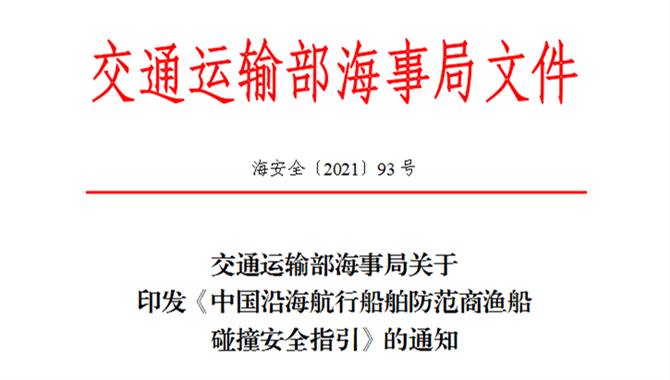
All relevant vessels:
Due to the exsitenceof many fishing vessels and the complicated hydrometerological conditions, which havecaused frequent collisions between merchant ships and fishing vessels in the China's coastal waters, China MSA provides the following advice for the purpose of navigation safety:
1. Normal Navigational Methods
1.1 Before entering the waters where fishing vessels are concentrated
1.1.1 The captain should examinepassage plan, asfar as practicable adopt the recommended route andtry the best to avoid entering the fishing vessels concentrated waters, so as to reduce the chance of encountering with fishing vessels.
1.1.2 Examine and test navigational aids and communication equipment such as RADAR, ECDIS/ECS, AIS, VDR, VHF, Navigational lights and sound-signalling equipment to ensure that all are in sound working condition.
1.1.3 Make proper arrangement on navigational watch. There should be at least 2 crew members engaged on the bridgewatch at all times.
1.1.4 Safety precautions and corresponding actions guide for navigating in the fishing area should be clearly posted at a prominent position on the bridge.
1.2 Navigating in or approaching tothe waters where fishing vessels are concentrated
1.2.1 It should be borne in mind that: Safety First, Don't take risks, Take a detour! As far as practicable avoid enteringthe waterswherefishing vessels are concentrated.
1.2.2 Appropriate bridge watcharrangementshall be made.Thenumber of bridge team may beincreasedaccording to the high traffic density of fishing vessels. Don't hesitate to call the captain to the bridge any time indoubt.
1.2.3 The captain should issue the night orders in response to the special precautionaryrequirements forthe safe navigation in fishing area at the night time.
1.2.4 Bridge should keep sharp look-out, use two or more radarsby long-range and short-range scanning. Do not rely too much on a single navigational aids, every vessel shall at all times maintain a proper look-out by sight and hearing as well as by all available means appropriate in the prevailing circumstances and conditions.
1.2.5 Proceed at a safe speed at all times.
1.2.6 Make sure the AIS information is updated and thedevice is in good working condition.
1.2.7 All measures shall be taken toavoid watchkeeperstoworkin fatigue or after drinking .
1.3 Special Precautions
1.3.1 When the summer fishing moratorium ends,usually it is the time when the density of fishing vessels is highest.
1.3.2 Based on accident statistics, most collisions betweenmerchant vessels and fishing vesselsoccurin the period between 2300and 0400.Therefore special attention should be given in this duration.
1.3.3 Special attention should also be paid to some fishing vessels anchored at night which might not arrange watchkeeper ordisplay proper lights orhave operationalAIS as required, and also to the interference from the excessiveuse of AIS onfishing nets or fishing marks.
1.3.4 When a fishing vessel is observed proceeding at the speed around 3 knots, she is possibly engaged in fishing and restricted in her ability to manoeuvre, keep clear at a safe distancewhenever possible.
1.3.5 Even a slight collision or contact between a merchant vessel and a fishing vessel might capsize the fishing vessel and cause subsequent damage to both the vessel and her crew. Howeverit is sometimes hard to be observed by watchkeepers on merchant vessesls. Therefore, When passing a fishing vessel at close range, great care should be taken to ensure that there is no collision, wave damage or vessel suction..
1.3.6 It is recommended that vessels sailing from the southern parts of the South China Sea to Japanese or Korean ports, and vesselsthat do not call at Chinese ports, proceedfrom the waters east of Taiwan Island and try to stay away from the coastal waters of China..
2. Action to Avoid Collision
2.1 Comply with the COLREG 1972.Any action to avoid collision shall be taken in ample time.Thealteration of course and/or speed shall be large enough.Action taken to avoid collision shall be such as to result in passing at a safe distanceuntil the other vessel is past and clear.Try to coordinate the collision avoidance actions through VHF CH16; however if there is no response from the fishing vessel after several calls, it might means that the fishing vessel does notmaintain listening watchonsuch channel. When communicating with VHF, give a full consideration to the limitations of accent and language expressionand ensure that both parties are clear about theirintentions.
2.2 Watch out for uncoordinated actions taken by fishing vessels at close range. When finding a fishing vessel that needs emergency collisionavoidance actions, give at least 5shortand rapidflashesbyALDIS light, or use a continuous sound signal to attract her attention.
2.3 In an emergencysituation, you should also consider reducing speed or stopping the vessel to avoid collision in addition to the alteration of course.
2.4 Action to avoid collision should decidedgiving fullconsiderations tothe surrounding conditions, so that such action will not result in any close-quarter situations with any other vessels.
3. Emergency Rescue
3.1 When a collision is unavoidable, it should be avoided as far as possible that the bow of your own vessel is heading to the fishing vessel.
3.2 The vessel should be stopped immediately after a collision. Life-saving rescue should be put at first priority and all endeavors shall be made to carry out the on-site rescueas long as your own safety is not severely threatened.It is strictly forbidden to give up search and rescue andleave the scene without authorization. Such behavior at sea means giving up the lives of others and will face severe punishment by law! Aided by the modern technology, almost all hit-and-run ships will be tracked down.
3.3 Immediately call the vessels in the vicinity to attend to the rescueoperations.
3.4 By all effective means, report to the nearest competent authority immediately. The content of such reportshould include the location of the accident, the name of the vessel in distress, casualties, damage, weather and sea conditions, rescue needs, etc..
Every crew member on navigational duty should be familiar with the above information.
The opinions expressed herein are the author's and not necessarily those of The Xinde Marine News.
Please Contact Us at:
media@xindemarine.com


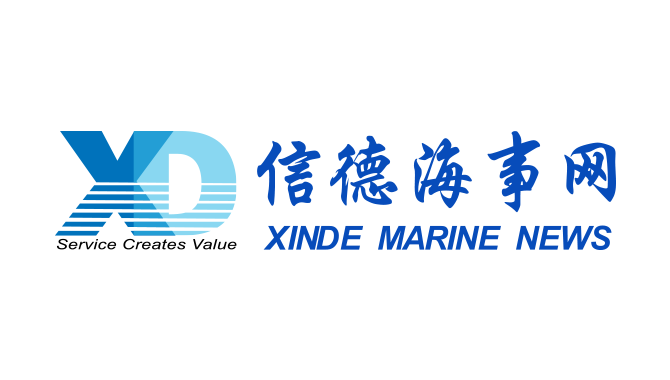 Reporting Requirements for Foreign-flagged Ships En
Reporting Requirements for Foreign-flagged Ships En 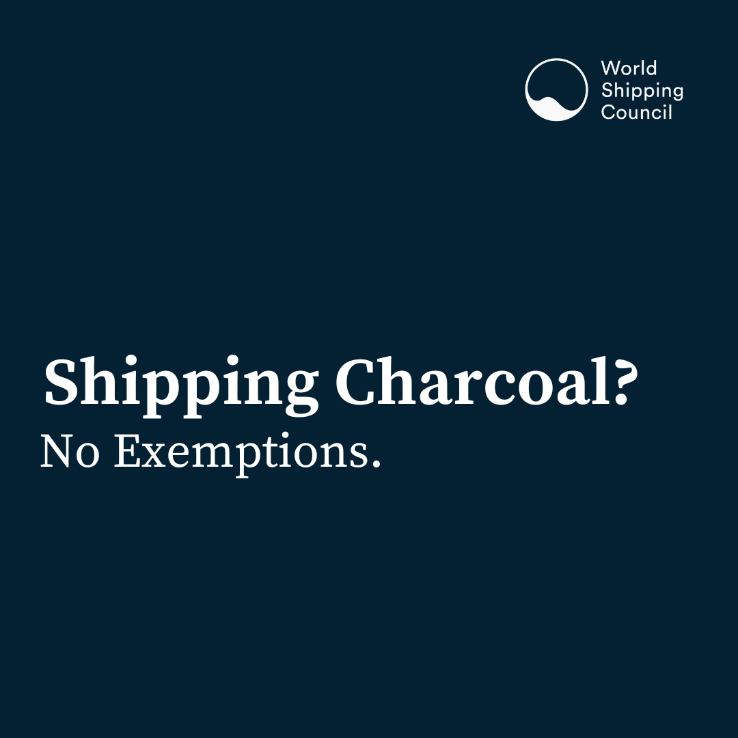 Shipping Carriers Move to Prevent Deadly Charcoal F
Shipping Carriers Move to Prevent Deadly Charcoal F 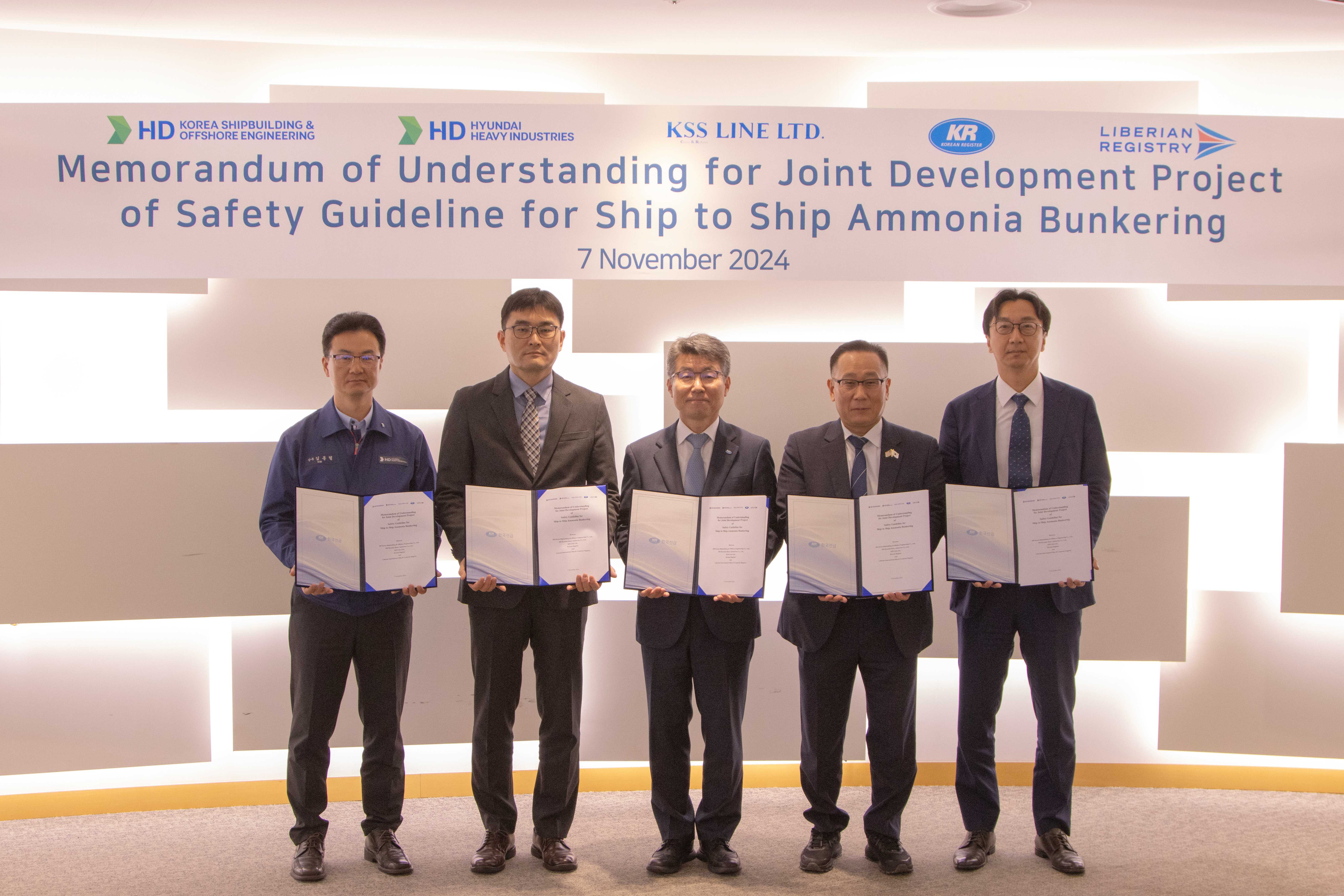 KR, HD KSOE, HD HHI, KSS Line, and Liberian Registr
KR, HD KSOE, HD HHI, KSS Line, and Liberian Registr 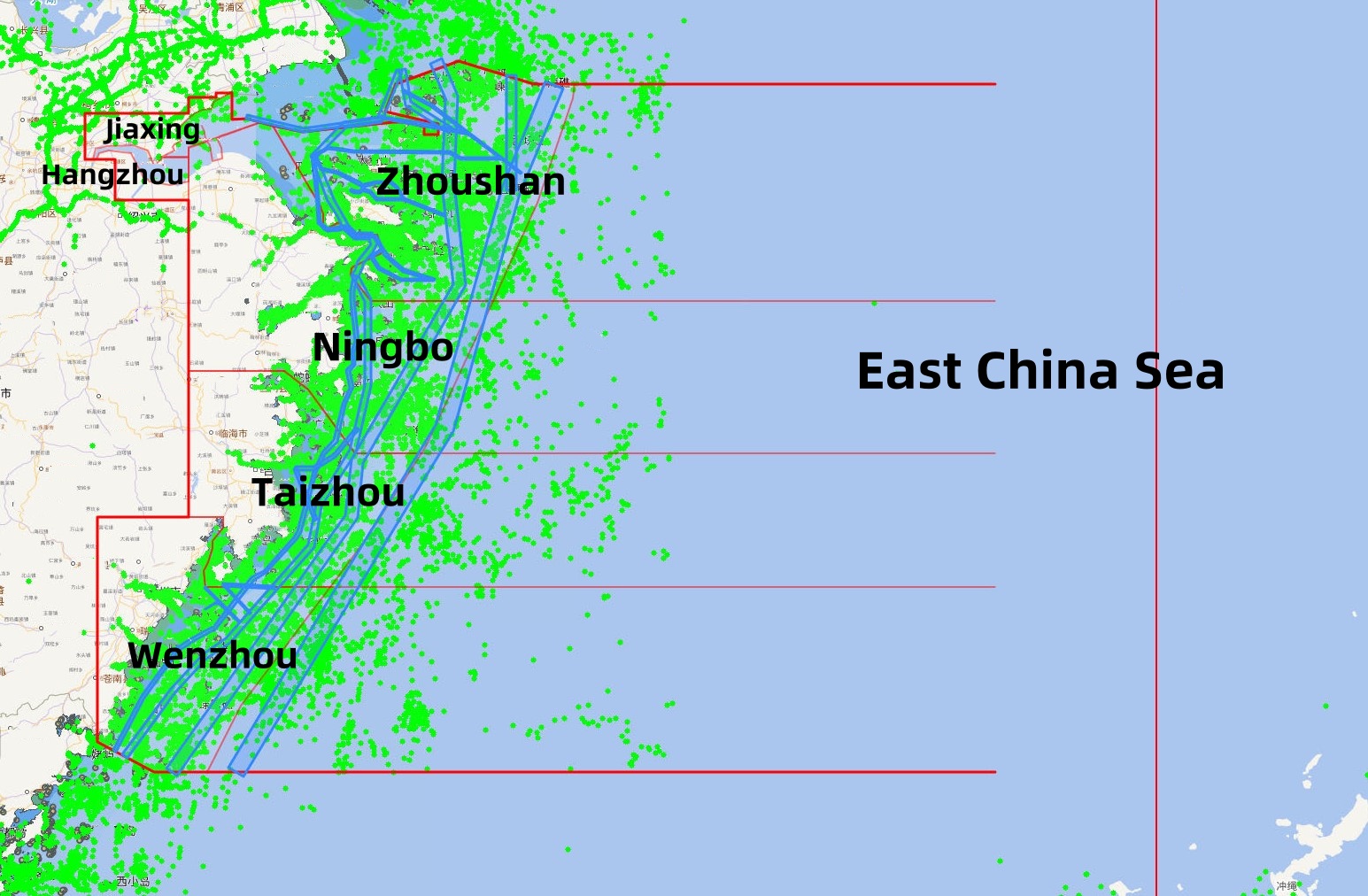 Zhejiang Maritime Safety Administration Issues the “
Zhejiang Maritime Safety Administration Issues the “ 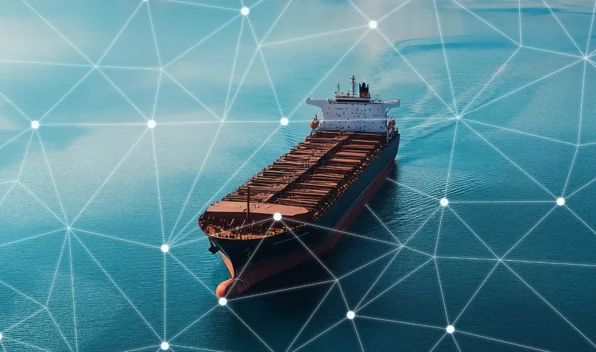 RightShip Updates Age Trigger for Vessel Inspection
RightShip Updates Age Trigger for Vessel Inspection 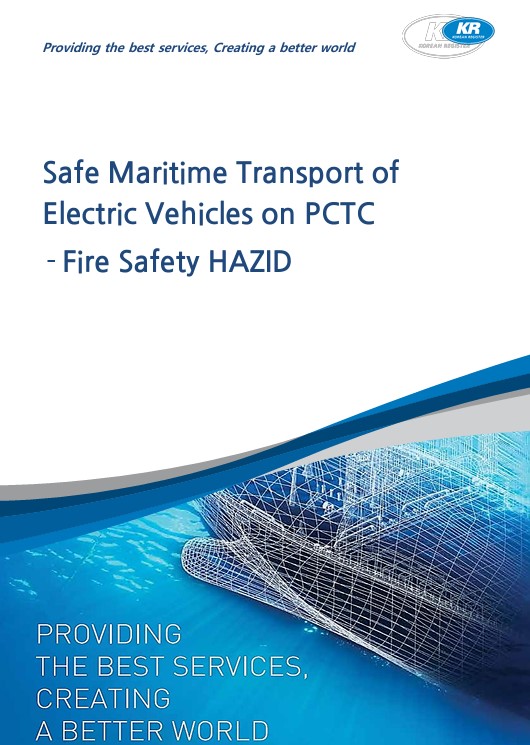 KR Publishes Report on Safe Maritime Transport of E
KR Publishes Report on Safe Maritime Transport of E